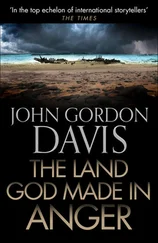Accidents notwithstanding, the nesting season was always a time of miracles. How did a pair of long-tailed tits manage to rear a dozen or fifteen babies inside their tiny, vertical oblong of wool and moss and grass? How did wood pigeons stop their bright-white eggs rolling off their platforms of dry sticks, from which they were constantly departing with a great clatter? How did green woodpeckers interpret the messages they sent each other in the bursts of gunfire – brrrrrp, brrrrrp – which they generated when hammering out nest-holes in the trunks of trees?
Wandering about the woods, I often made for a clearing in which a gnarled and grizzled ancient, with a filthy pork-pie hat crammed down on his head, sat upright on a section of tree trunk, cutting tent pegs from hazel branches. One, two, three jabs against a long blade fixed upright in front of him – and almost before the chips had landed on the ground another peg went onto the pile. He hardly ever spoke; but as he did not seem to resent my presence, I used to stand and watch him, fascinated by the precision and economy of his movements. I see him now, chipping away in a sea of bluebells every spring.
Other choice destinations were the dew ponds scattered about the woods – small, circular pools ten or fifteen yards across, all perfectly round and enclosed by trees or bushes. It was clear from their shape that they had been dug by humans, but there was something mysterious about the way they always contained water. In that high chalk country there were no springs or streams to replenish them, yet they never dried out. Was it rain that filled them, or, as their name suggested, condensing dew? One pool was so thickly covered with algae that we called it the Green Slime – and it was there that I witnessed the magical sight of a woodcock carrying chicks, one at a time, between its thighs. The bird flew low and heavily for about fifty yards, before depositing its freight at a point which it obviously thought safe.
On the farm most of the power came from heavy horses, which did the ploughing and drilling, and hauled the wooden-wheeled harvest wagons into the rickyard behind the barns. They were driven and looked after by old Dave Collis, a small, bent man with one rheumy eye, who was reputed to be deaf only when he wanted to be. The farm also boasted one veteran blue tractor – a sign of things to come; but, like the horses, life moved at a leisurely pace.
The two great events of the year were harvest and threshing. As the corn ripened in July, everybody available joined forces to bring in the barley, wheat and oats: children, office workers, shop girls, boys from school camps organized by the Government – all came out to help. Our harvesting machine was a binder, drawn by two horses – a weird looking contraption with spinning wheels and unguarded drive belts, topped by a skeletal rotating flail which swept the crop backwards onto a reciprocating knife. Round and round the field it crawled, cutting the stalks, ingesting them and binding them into bundles with heavy twine, the knife chattering and the release mechanism giving a loud clack every time it ejected a sheaf.
Great was the excitement as the area of standing corn gradually diminished and rabbits trapped in it began to panic, weaving tell-tale trails of ripples through the ears as they dashed back and forth in search of a safe exit. Boys with sticks and, further out, old farmhands with guns, surrounded the shrinking patch, eager for the quarry to break cover. With the light failing and their shelter almost gone, the rabbits had no option but to run for it – and suddenly all was action: the men firing, the boys yelling, lashing out with our sticks and diving onto individual sheaves as we tried to pin down fugitives which had taken temporary cover. Nobody was squeamish in those days: we knew how to kill a rabbit by chopping it on the back of its neck with the edge of a hand, and how to paunch it by slitting open the skin over its stomach and scooping out the warm entrails with our fingers.
Cutting the corn was only the start of the laborious harvesting operation. The sheaves had to be picked up by hand and stood in pairs to make stooks – three pairs for a wheat or oat stook, four for barley, with a neat tunnel along the middle so that air would flow through and dry the grain in the ears. Boys could make good pocket money from stooking – and we earned it, for wheat sheaves were heavy, and the prickly hairs on barley stalks lacerated the inside of our wrists and forearms, as did the spines of thistles.
Threshing, which took place in winter, was heralded by the arrival of a majestic steam engine, which gave a couple of saucy hoots as it crawled down the last stretch of the lane, crunching gravel under its steel wheels and towing the great drum or barn worker – the threshing machine itself. In the rickyard the two had to be precisely aligned, so that a long canvas belt could transmit power from the flywheel of the traction engine to the drive wheel on the drum. When all was set, work began.
A man, woman or boy on top of the rick pitched sheaves down, one at a time, to a man on the drum, who cut the strings and dropped the loose stalks into the maw of the greasy monster. Standing aloft on the rick, lifting the sheaves with a pitchfork, was exciting work, for every movement might lay bare a nest of mice or rats, which would erupt and make a dash for the edge, launching themselves into space – only to meet their doom among the dogs and boys below. Experienced workers tied twine round the bottoms of their trouser legs to deny mice access, but often a yell or a shriek meant that their defences had been penetrated.
As the sheaves were beaten out in the drum, the air filled with dust, sending hay-fever sufferers into paroxysms of sneezing. Wheat was bad enough, but barley was worse, as the spiky ears set floating in the air left faces red and raw. From a tube on the side of the drum golden corn came pouring out into sacks, and these had to be lifted by hand and carried away for storage. The noise was intoxicating: the steam engine hissing, the drum roaring and rattling, the canvas belt flapping, boys shouting, terriers yapping, whippets and collies barking.
In spite of the war, everything about the farm seemed comfortably old and settled – the eighteenth-century barns, with their huge beams, red-tiled roofs, walls of blackened feather-edge planks and their fusty smell of rats and mice; the carthorses and their stable hung with leather harness; the wooden wagons, some of them gaily painted; the cast-iron hand pumps, mounted on little brick pillars, for bringing up water from the underground cisterns; the hand-turned mangold-cutter; the huge hay knife, three feet long, for chopping slices from the stacks; the heavy platform scales with their 56-lb iron weights. Yet my favourite emblem of perpetuity was not on the farm at all.
Far out in one of the woods was an ancient shepherd’s caravan, with a hooped roof and steps leading up to the door. It stood in a clearing, and although it was still on its wheels in my imagination it had been there for ever: long grass had grown over its axles, and the planks along its walls had weathered to a shade of soft, pale grey furred with lichen. Once a shepherd’s mobile summer home, it was used in my day by the gamekeeper as a store for pheasant food, rabbit traps and so on. But it also had another, more subtle role.
In the middle of one board on its south face was a knot-hole, and anyone peering through it, as though through a pin-hole camera, could see a small area of the opposite wall. At dusk on winter evenings the keeper would light an oil lamp, hang it from the ceiling, and, at the point on which any nocturnal snooper’s eye would fall, prop up a crudely written notice proclaiming in big letters painted on cardboard, BACK IN HALF AN HOUR. Whether or not this enigmatic device had the effect of deterring poachers, none could say; but now, seventy years later, I feel it epitomized the simplicity of country life in those far-off days.
Читать дальше












